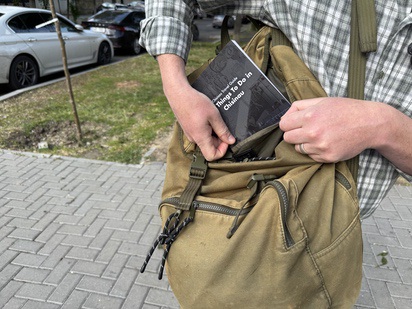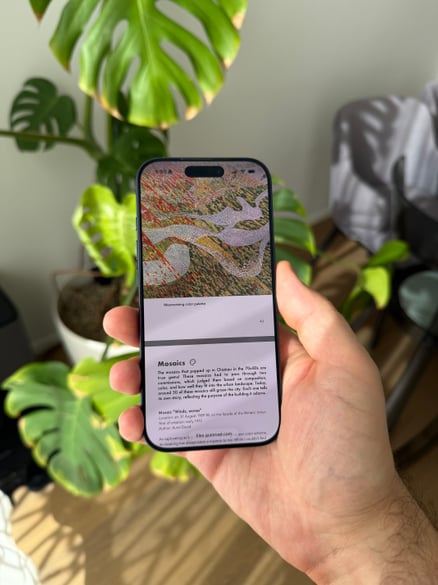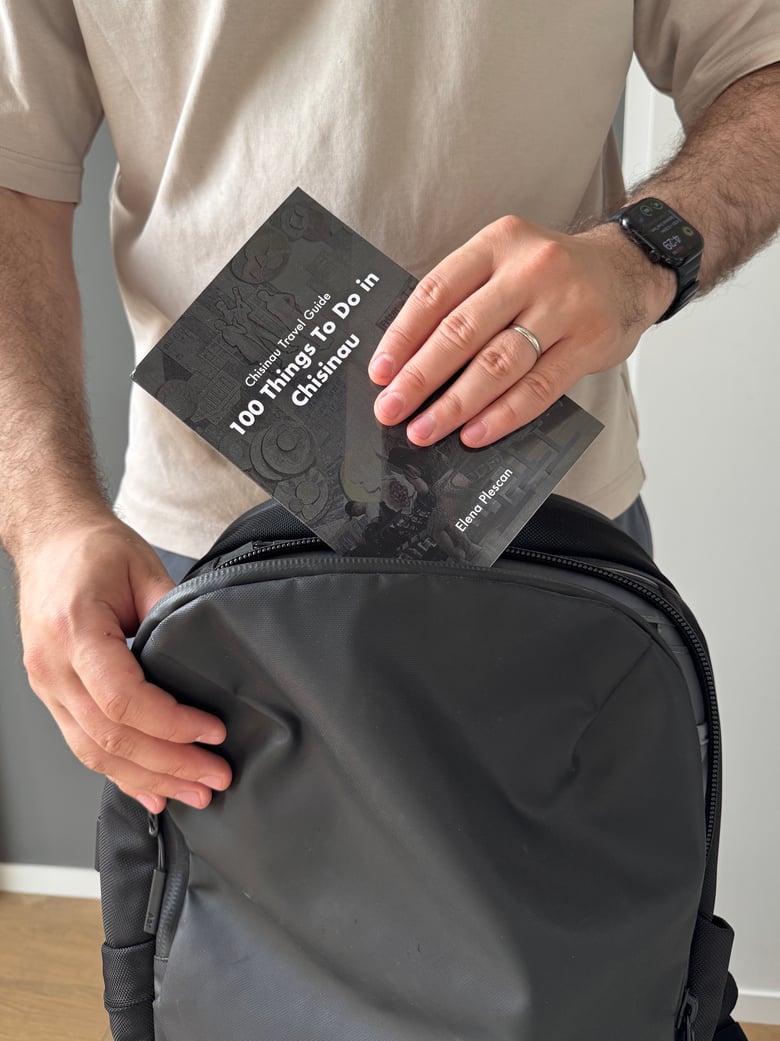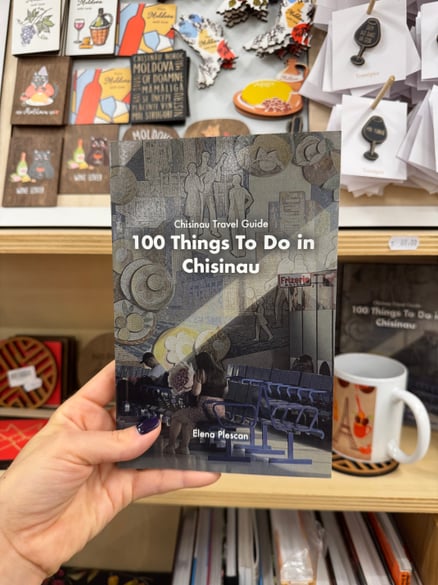Is Chisinau worth visiting?
If you’ve read blogs or watched YouTube, you’ve probably heard it’s boring or ugly.
Most of that content is clickbait — foreigners chasing “poorest country in Europe” views.
The truth is, there’s not much travel-friendly information about Chisinau, so most visitors end up with a mediocre experience.
Chisinau feels underwhelming at first, and by the time you start enjoying it, it’s already time to pack up and go.
Chisinau Travel Guide helps you skip straight to the good part. From grand Soviet landmarks to indie cafés, it’s a curated list for travelers who want to experience the city like a local. It's 137 pages of insanely useful and up-to-date Chisinau information — available as a paperback or ebook.
And if you’re curious about Moldova overall, there’s a separate guide for that.
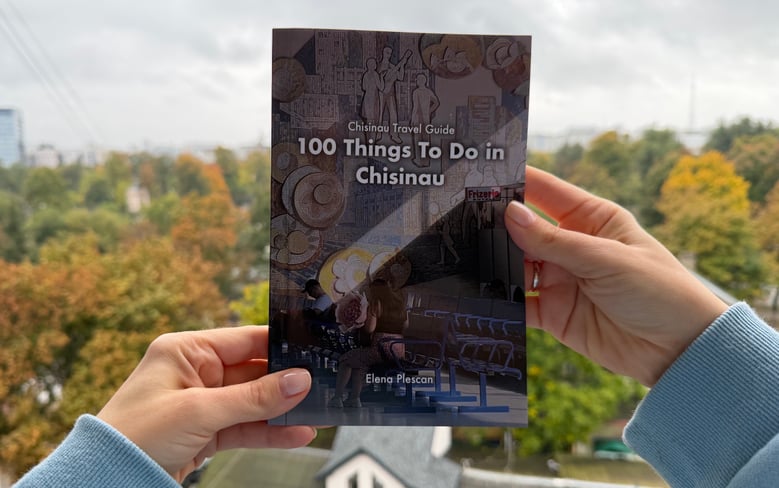
About this guide

Hey, I'm Elena, a Chisinau local! After living for a decade abroad, I returned to my hometown in 2022.
The post-Soviet city I once knew had blossomed into a charming European capital. I started exploring hundreds of places and handpicked the ones that showcased the best of Chisinau.
What began as a private Google Maps list soon turned into this travel guide — I didn’t want to keep all the cool spots to myself! 100 Things To Do in Chisinau is perfect for those who want to explore beyond the touristy spots.
See you soon in Chisinau,
Elena
Planning your trip to Chisinau
After arriving, you’ll want to start exploring right away, but let’s be honest—those first few days in a new city can be overwhelming. With these practical tips, you’ll have everything you need to settle in smoothly and focus on enjoying your adventure, stress-free.
Here are a couple of things to know before traveling to Chisinau:
- How safe is Chisinau?
- When to visit Chisinau?
- How many days to spend in Chisinau?
- Where to stay in Chisinau?
- Top things to do in Chisinau
- Must try Moldovan dishes
- Transportation in Chisinau
- How to get a SIM card?
- Where to exchange money?
- Do you tip in Chisinau?
- What language people speak?
How safe is Chisinau?
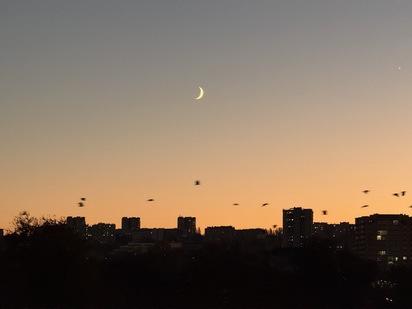
Chisinau, and Moldova overall, are safe for travelers. Most visits are trouble-free, and violent crime is rare. That said, like in any city, a little street smarts can go a long way.
Petty Crime
Pickpocketing and bag snatching can occasionally occur in Chisinau, particularly in crowded places like: public transportation and bus stations, markets and pedestrian zones, outdoor cafes and restaurants. To stay safe:
- Keep your passport and valuables in a secure place.
- Avoid flashing expensive jewelry or electronics.
- Use caution when withdrawing money from ATMs.
- Choose accommodation with good security (e.g., lockable doors, safes, front desk presence).
Violent Crime
Violent crime is rare and tourists are not typically targeted. Still, it's smart to avoid poorly lit or isolated areas at night. Use common sense, just as you would anywhere else.
The War in Ukraine
Moldova borders Ukraine, which is currently under Russian invasion. While tensions have increased and there have been a few incidents of debris landing near Moldova’s eastern border, the vast majority of the country—including Chisinau—remains peaceful and unaffected. Life in the capital continues as normal.
What About Transnistria?
Transnistria is a breakaway region in eastern Moldova near the Ukrainian border. It’s not under the control of the Moldovan government, and the security situation there is unpredictable—especially in the current geopolitical climate.
It’s best to avoid traveling to Transnistria altogether.
What is the best season to visit Chisinau?
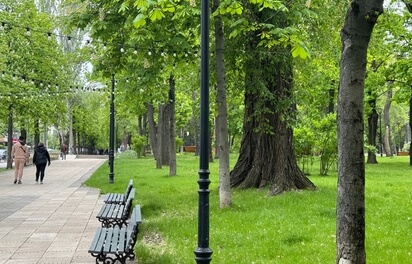
- Apr & May: The weather is mild, with blooming flowers and greenery. It’s perfect for outdoor activities and exploring the city's parks and gardens.
- Jul & Aug: Summer can get quite hot, with temperatures exceeding 35°C (95°F). However, it’s also a lively time, with numerous cultural events, outdoor markets, and festivals.
- Sep & mid-Oct: Autumn is grape harvest season, making it a wonderful time to attend the National Wine Day, explore local wineries, and taste fresh produce.
National Holidays are official days off in Moldova, when many businesses and museums close or shorten hours—so check ahead. Chisinau is most vibrant on Independence Day, Language Day, and City Day, when streets fill with music and food stalls. During religious holidays, many people head to villages, and the city feels quieter than usual.
- January 1 – New Year’s Day
- January 7–8 – Orthodox Christmas
- March 8 – International Women’s Day
- April (varies) – Orthodox Easter Sunday and Monday, the following Sunday is Memorial Easter (Pastele Blajinilor), when families visit cemeteries to honor loved ones
- May 1 – Labour Day
- May 9 – WW2 Victory Day
- June 1 – International Children’s Day
- August 27 – Independence Day
- August 31 – Language Day (celebrates the Romanian state language)
- October (first weekend) - National Wine Day (local holiday)
- October 14 – Chisinau City Day (local holiday)
- December 25 – Catholic Christmas
How many days to spend in Chisinau?
For most travelers, two to three full days is enough time to explore the main landmarks, sample local food and wine, and wander through parks and courtyards without feeling hurried.
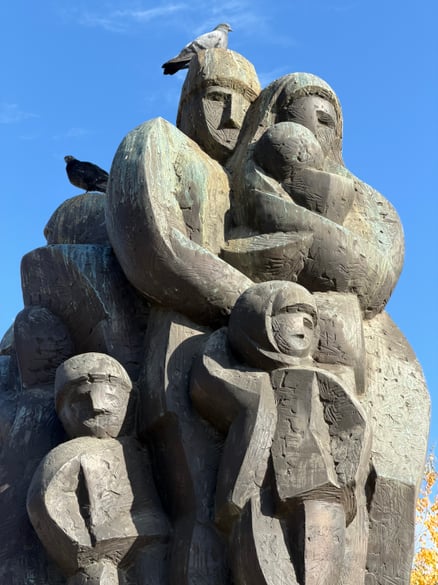
If you have just 1 day in Chisinau, focus on the essentials: a stroll along Stefan cel Mare Boulevard from Organ Hall to Herta House, traditional Moldovan lunch at La Placinte, and enjoy a glass of wine at Plincuvin or cocktail at Marlene.
With 2-3 days in Chisinau, you can add a visit to the History or Art museums and coffee shops like Coffee Monkey. Immerse yourself in the everyday Chisinau life by spending half a day at the Central Market or Valea Morilor park. Don't miss the Soviet walking tour (yep, you don't need to go all the way to Transnistria for that!).
If you're here for more than 4 days, take a day trip to Milestii Mici winery, or visit Old Orhei-Cricova-Curchi monastery all in one day for a glimpse of Moldova's countryside. Another option is to explore the nearby region of Gagauzia, including a visit to the Manuc Bei mansion, cooking masterclass and wine tasting.
Chisinau grows on you! The longer you stay, the more you'll uncover its rhythm and charm.
Where to stay in Chisinau?
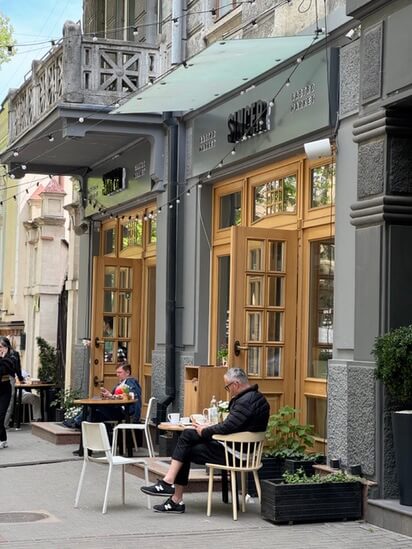
If you're visiting Chisinau, the best area to stay is the City Center. It's within walking distance of most major attractions and boasts some of the city's best restaurants and cafes.
Budget
Hostels are a great way to save money and meet fellow travellers. A dorm bed typically costs $15 per night, while a double room is under $40. Hostels in Chisinau are not the most stylish, but they sure are affordable.
Mid-range
For about $90-120 per night, these hotels typically offer more comfort, including buffet breakfasts and facilities like gyms and pools.
Luxury
For $180+ per night, these top-tier hotels provide amenities like fitness centers, spa services, and airport shuttles.
What are the top things to do in Chisinau?
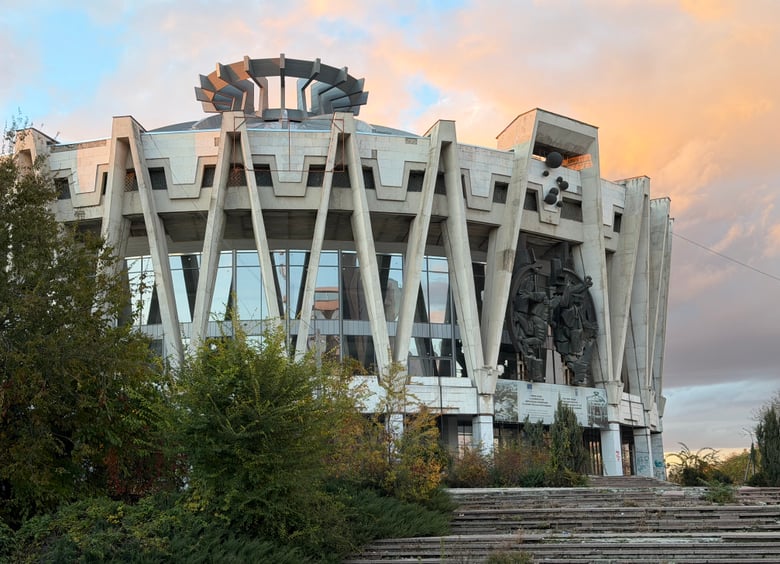
Chisinau isn't about grand landmarks — it's about quiet charm, leafy streets, and small discoveries that grow on you the longer you stay. Here are some of the best things to do:
- Relax in the parks. Cathedral Park is the city's heart, where the white bell tower and Triumphal Arch nearby make a perfect first impression. In Valea Morilor park you can rent a boat, walk around the lake, or simply sit with an ice cream and watch the city unwind. On weekends, you'll often hear live music drifting through the air.
- Explore Chisinau's Soviet side – buildings like Hotel Cosmos, Romanita Tower, and the Circus are fascinating examples of mid-century architecture. They tell stories of ambition and faded grandeur.
- Visit the History Museum – beyond the rooms, don't miss the exhibits and the food truck in the park surrounding the museum. Also, there's a cool Carturesti bookstore, where you can get Moldovan books and souvenirs.
- Get lost in Central Market – it's chaotic, colorful, and authentic. Sample local cheese, fresh fruit, or pickles, and feel the rhythm of daily life. Maybe you can even buy some seasonal produce or flowers.
- Sip Moldovan wine – try a tasting at the urban ATU Winery or one of the small wine bars downtown. Moldova's wine culture is deep, and this is where you start to understand it.
- Discover creative spaces – places like Artcor and Auditoria_23 show the city's modern, artistic side with exhibitions, concerts, and pop-up events.
- Take coffee breaks often – Chisinau's coffee scene is surprisingly good and abundant for such a small city. Each spot — from minimalist Kosmonavtika to the cozy Poetry — has its own character and crowd.
10 Moldovan must try dishes

- Mămăligă cu friptură – The ultimate Moldovan comfort meal. Golden cornmeal porridge served with roasted pork or chicken (friptură), salty sheep cheese (brânză de oi), and a dollop of sour cream. Hearty, rustic, and best enjoyed with a glass of local wine.
- Sarmale – Tender cabbage, vine and even raspberry leaves stuffed with rice, minced meat, carrots and onions, then slow-cooked in tomato sauce. In my opinion, the vine-leaf version is by far the tastiest.
- Zeamă – A light, tangy chicken soup made with homemade noodles, garden vegetables, and a splash of parsley. Locals swear by it as the cure for absolutely everything — and it’s regularly mentioned among the best soups in the world.
- Plăcinte – Flaky pastries stuffed with cheese, potatoes, cabbage, apples, or cherries. Found in every Moldovan bakery or market, these are dangerously addictive and best eaten warm.
- Ghiveci – A colorful vegetable stew made with eggplants, peppers, zucchini, and tomatoes. It’s light yet rich in flavor — a summer favorite across the country.
- Cighiri – A hearty countryside dish made from minced pork liver, lungs, and onions wrapped in caul fat and fried until crispy. Think of it as Moldova’s rustic version of meat patties — bold, flavorful, and satisfying.
- Răcitură – A jellied meat dish made from pork or chicken broth that’s chilled until it sets. A holiday classic — refreshing, savory, and full of rich flavor.
- Fasole făcăluită – Creamy mashed white beans blended with garlic and topped with caramelized onions or fried paprika oil. Simple but unbelievably tasty, especially with crusty bread or pickles.
- Cușma lui Guguță – A whimsical dessert made of stacked crêpes filled with sour cherries, rolled into a cone, and covered with whipped cream. It looks like a fur hat (“Guguță’s cap”) and tastes like a Moldovan fairytale.
- Baba neagră – A dark, spongy cake baked slowly until it caramelizes, creating a rich, slightly smoky flavor. Traditionally served at holidays and family gatherings.
The list above includes just a few of the most beloved and easy-to-find dishes — but it’s only the beginning of what Moldovan cuisine has to offer. There are hundreds of other delicious and unique Moldovan dishes, each with its own regional twist or family recipe. If you spot something that looks interesting while exploring restaurants, try it!
How to get around Chisinau?
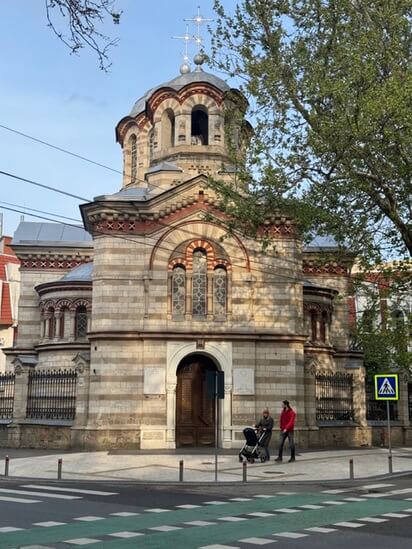
If you're staying in the city center, walking is by far the best way to get around. Chisinau is a compact city, and most walks won’t take more than 40 minutes in one direction. Plus, walking is the perfect way to stumble across beautiful spots and get a real feel for the city.
Public transportation is another good option. Chisinau’s network of trolleybuses and buses covers much of the city. The fare is 6 MDL, which you pay in cash to the conductor on board (taxator). You can use Google Maps to plan your trip, although arrival times might differ. While minibuses (marshrutka) are also available, I don’t recommend riding them unless absolutely necessary—they're quite cramped.
Finally, there’s the option of taking a taxi, which I find the fastest and most convenient. All you need is an internet connection and a taxi app. Just keep in mind that during rush hours (8-10 AM and 5-7 PM), fares increase, and travel times can double due to traffic.
- Transit apps: To check available public transport routes in Chisinau, try using apps like map.md (iOS, Android) or Moovit (iOS, Android). Google Maps also provides accurate information.
- Taxi apps: For a reliable taxi service with upfront pricing, use apps like Hip (iOS, Android) or Yandex Go (iOS, Android).
How to get a SIM card/internet in Chisinau?
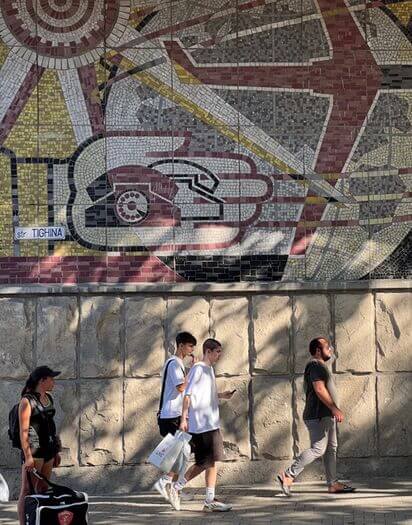
The most stress-free way to get internet in Moldova is by getting a eSIM ($9-30 gets you 2-10GB for 30 days). You can set it up while still in your home country by following the link, no physical SIM card needed. You’ll have internet the moment you land, making it easy to find your accommodation and grab a taxi.
For the most budget-friendly option, you can purchase a local prepaid SIM card at one of the many Moldcell or Orange shops in Chisinau. Both providers offer competitive pricing and coverage, and run regular promotions.
Moldcell: 29 MDL ($1.6, €1.5) gets you 20GB of data plus 250 call minutes, valid for 15 days. You can top up with 30-50 MDL for an additional 10-20GB, extending the validity by another 15 days.
Orange: 49 MDL ($2.8, €2.5) gives you 20GB of data and 250 call minutes, also valid for 15 days. Top-ups cost 30-60 MDL, providing an extra 3-15GB for another 15 days.
Where to exchange the local currency?
The local currency in Moldova is the Leu (MDL). The exchange rate is approximately 1 EUR=19.15 MDL and 1 USD=17.60 MDL. You can easily exchange money at a bank or exchange office—just look for those with a '0% commission' sign on the door. For the best exchange rates in banks, check Curs.md.
In Chisinau there’s generally no need to carry a lot of cash as most stores accept foreign credit and debit cards. That said, you might still need cash for things like tipping in restaurants, paying museum entrance fees, or using public transportation. Having 300-400 MDL in 20, 50 and 100 bills is enough to carry at a time.
Do you tip in Chisinau?
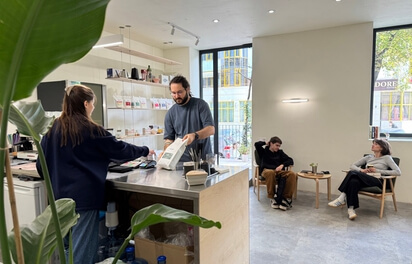
In Moldova, tipping is seen as a gesture of appreciation, not an obligation. The only situation where tipping is somewhat expected is in restaurants. Elsewhere, tipping is genuinely optional and not required.
- Restaurants: A 5-10% tip is standard for table service, but even here, it's up to you—if the service was average, feel free to skip the tip.
- Cafés, Bars, Takeaways: Tipping is not expected at all. If you’re feeling generous, you can leave some change in the tip jar.
- Hairdressers, Barbershops, Massage Parlours: No tip is necessary, though regulars who plan to return might leave a 5-10% tip.
- Taxis, Hotels: Tipping is not expected at all.
What language people speak in Chisinau?
The official language of the Republic of Moldova is Romanian — the very same language spoken in Romania. Romanian belongs to the Romance language family, just like French, Italian, Spanish, and Portuguese. If you’re familiar with any of these, you may notice some similarities in words and structure.
Many Moldovans also speak Russian fluently, a legacy of the Soviet period. In Chișinău, you’ll hear both Romanian and Russian on the streets, and most people switch between them with ease. English is spoken well by younger people, especially in the capital, but less so in rural areas.
Locals will always appreciate it if you make the effort to use a few polite phrases in Romanian. Here are some useful ones to get you started:
- Hello: Bună ziua "Boo-nuh zee-wah"
- Thank you: Mulțumesc "Mool-tsoo-mesk"
- Excuse me: Cer scuze "Cher skoo-zeh"
- Goodbye: La revedere "Lah reh-veh-deh-reh"
- Please: Vă rog "Vuh roag"
- Can I have a coffee, please: O cafea, vă rog "Oh kah-fee-ah, vuh rog"
- Can you bring the bill, please: Nota, vă rog "Noh-tah, vuh rog"
What's next?
If you’re interested in learning more about the city or are seriously considering to visit — check out the whole Chisinau Travel Guide: 100 Things to Do in Chisinau. It's 137 pages of insanely useful and up-to-date Chisinau information — available as a paperback or ebook. Also, there's a separate guide to expore the Moldovan countryside.
What’s Inside:
- 100 curated places including landmarks, museums, parks, restaurants, cafes, bars, shopping and entertainment.
- Up-to-date info with photos, location, contacts, opening hours, prices and tips.
- Essentials and gems, showcasing both popular and off-the-beaten-path attractions.
- Insider tips on when to come, where to stay, how to get around, exchange money, get a SIM card, and much more.
⭐️⭐️⭐️⭐️⭐️
5 out of 5 on Amazon
“Highly recommended! Experience the city more like a local than a tourist” - EV
"This book is incredibly well put together, full of interesting and practical suggestions that go beyond the touristy spots" - Nino
"So many unique recommendations that I was not able to find on YouTube or TripAdvisor" - Tanaya M
